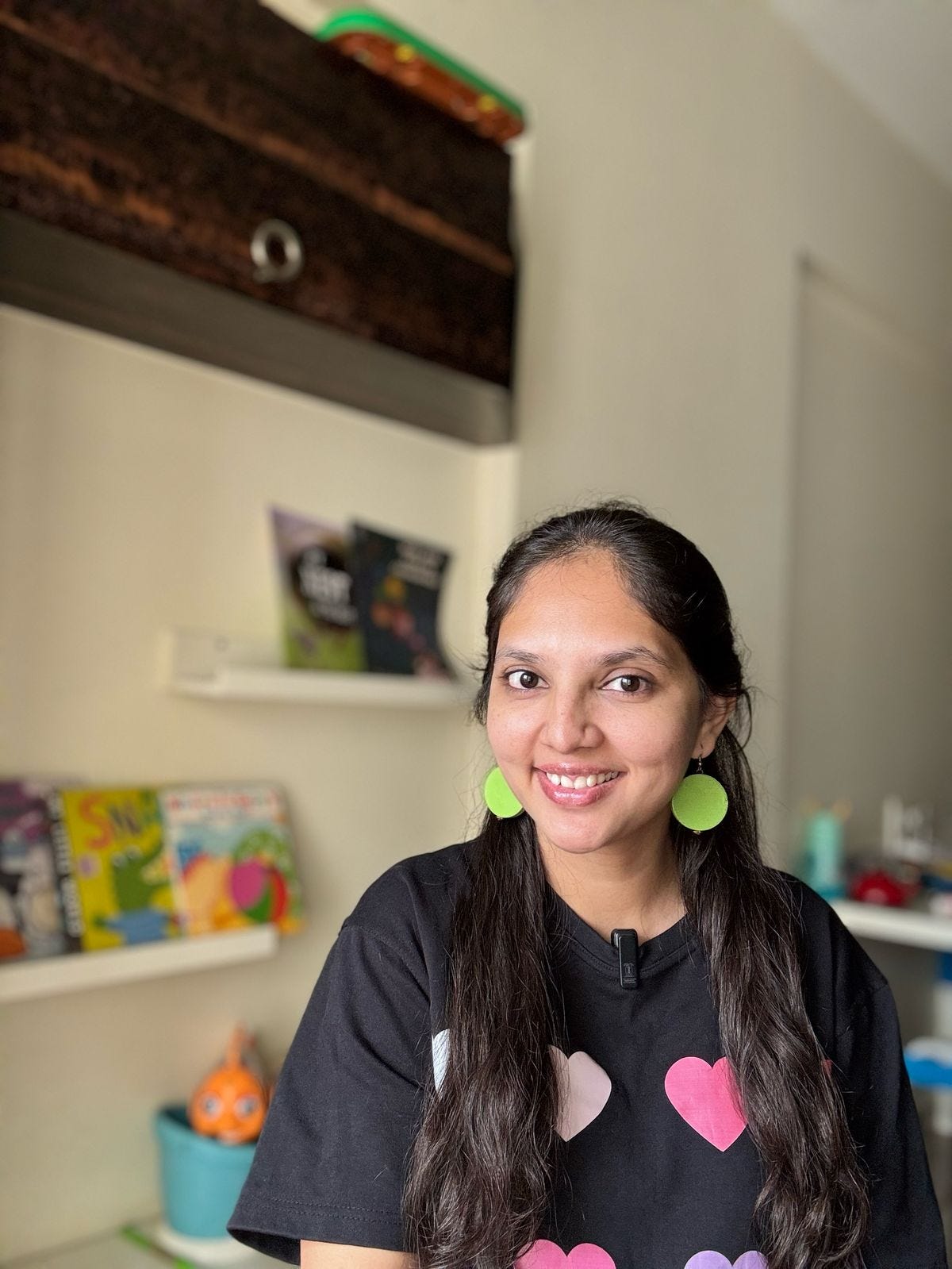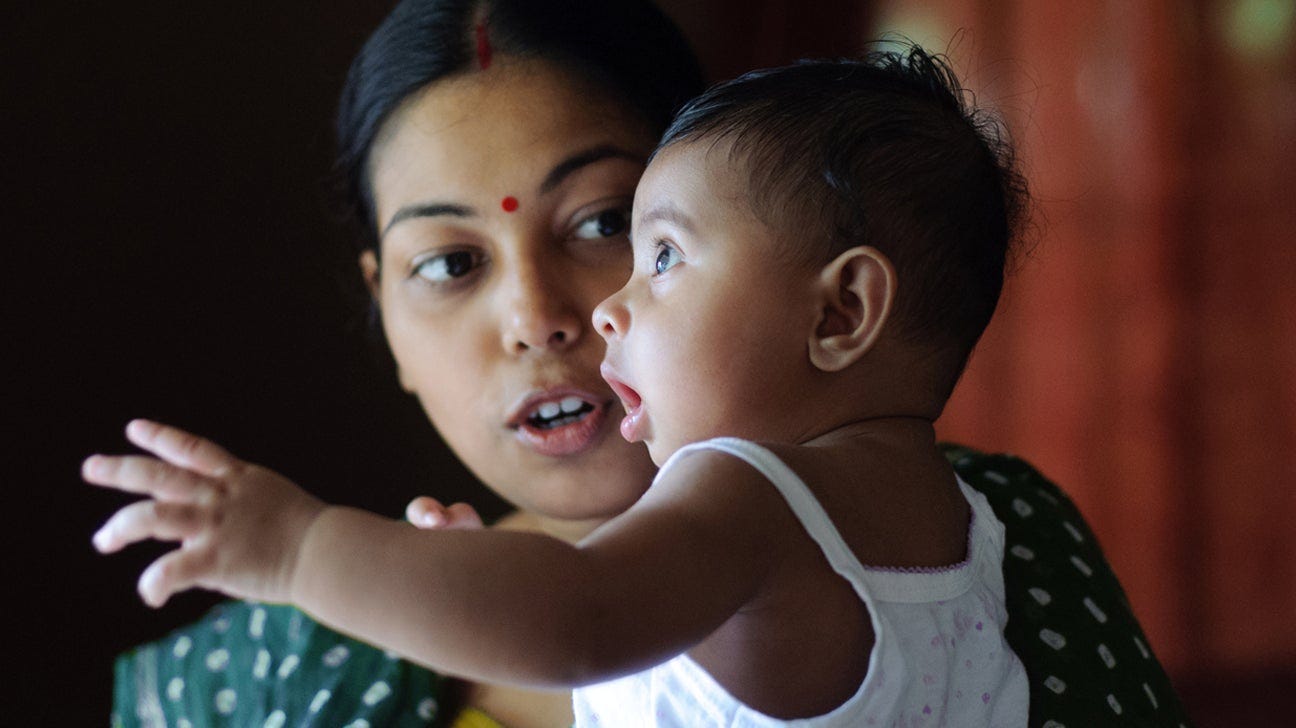[Blog] Ep 58. What To Do If Your Child Is Not Talking
ft. Bisma Shaikh, Speech Language Pathologist
Speech delays are one of the biggest worries modern Indian parents face, and in this episode of The Modern Indian Parent Podcast, host Rinie Gupta sits down with renowned speech-language pathologist Bisma Shaikh to clear the confusion, bust common myths, and share actionable advice.
Whether your toddler isn’t speaking much yet, or you're wondering how to encourage better communication early on, this episode is packed with insights that every parent needs.
How to Know If Your Child Has a Speech Delay
Bisma explains that delays can be identified as early as one year old. Key milestones include:
1 year: Babbling, responding to name, simple back-and-forth interaction.
18 months: At least 10–12 meaningful words (like “mama,” “doodoo,” “ball”).
2 years: Around 80–100 words, beginning to form 2-word phrases.
3 years: Delays become more obvious—gestures may replace words.
Early detection means early support, and Bisma stresses that parents shouldn't “wait and see.”
Busting the Most Common Myths
Myth 1: “Boys talk late”
While slight differences exist, boys and girls both fall within the same developmental range. Assuming boys can take longer is a harmful myth.
Myth 2: “They’ll talk when they’re ready”
No, they might not. “Waiting it out” risks losing precious early learning years. Therapy is now accessible, effective, and most importantly—gentle and play-based.
Myth 3: “Multiple languages cause delays”
Bilingual and multilingual homes are not to blame. Children (even those with developmental challenges) are capable of learning multiple languages from birth. Don’t hold back on your cultural richness.
Where Parents Might Be Doing Wrong
1. Early & Excessive Screen Time
Even 3-month-olds are being exposed to screens. This harms not only speech but also cognitive, motor, and attention development.
2. Not Talking With Your Child (Even When You’re There)
In today’s busy, tech-filled homes, kids may be surrounded by caregivers, toys, or even learning gadgets—but not conversation. Simply handing over a bottle when they gesture or buying educational toys isn’t enough. Whether it’s changing a diaper or opening a snack, narrate your actions, label feelings, and pause to let them respond. Bisma puts it perfectly:
“You are the best toy your child needs.”- Bisma
Teaching Academic vs Functional Words
If your toddler knows their colors, shapes, and even the ABC song—but still can’t ask for water—it’s a sign they’re learning academic words, not functional ones. Bisma breaks down why teaching kids words that help them express their needs, feelings, and discomforts (like “more,” “all done,” or “mama”) is far more valuable in early years than rote knowledge. It's not about sounding smart—it's about being understood.
Why and How To Teach Baby Sign Language & Gestures To Aid Talking
Before your baby can talk, they can communicate with gestures—and that’s a huge win. Bisma Shaikh strongly recommends teaching baby signs from as early as 5 to 6 months. Why? Because babies often understand far more than they can say. Gestures act as a bridge between what they feel and how they express it. It reduces frustration—for them and for you. And no, using gestures won’t delay speech. In fact, it does the opposite—it builds the foundation for verbal language.
👶 A Few Useful Signs to Start With:
👋 Hi/Bye
🙋♀️ Help
🤲 All done
🍼 Milk
💤 Sleep
🧼 Wash hands
🧠 How to Teach Them?
Model them. Use the gestures consistently during everyday routines. For example, when you say “All done,” make the sign too. Over time, your child will begin to understand—and use—them to communicate back.
Think of it as giving your baby a voice, even before the words arrive.
What Is Speech Therapy and How Does It Work?
When parents hear “speech therapy,” they often imagine flashcards, drills, or sitting across from a therapist repeating words. But for toddlers, speech therapy looks very different—and far more natural.
As Bisma Shaikh explains, speech therapy is play-based and tailored to each child. It helps kids:
Understand and process language
Learn how to express their needs
Build real communication skills through daily routines
For young children, especially toddlers, therapy isn’t just about what the therapist does—it’s about coaching parents on what they can do at home. You’ll learn strategies like modeling, pausing, and engaging in back-and-forth interactions that boost your child’s ability to speak and connect.
The goal?
To empower you, the parent, with tools you can use every day—during playtime, mealtime, bath time—to help your child thrive.
How Long Does It Take?
There’s no fixed number of sessions. Every child is different—some may need a few months of support, others longer. But if therapy is being done correctly, parents should begin seeing noticeable progress within three months.
The magic lies in consistency—not perfection. A few small changes in how you interact with your child can lead to big developmental gains over time.
Easy Speech Strategy: Self-Talk + Pause + Repeat
According to speech therapist Bisma Shaikh, one of the most effective strategies is something every parent can do at home—and it starts with how you narrate your everyday life.
✅ Here's how it works:
1. Self-Talk
Describe what you’re doing in the moment, out loud, using clear and simple words. For example:
🗨️ “You brought your bottle! You want water? Let’s go get water.”
This helps your child associate words with real-life actions and needs.
2. Pause
After describing what’s happening, pause intentionally. This gives your child time to absorb what you said and, if they’re ready, try responding or repeating. Even a small sound, gesture, or word attempt is a step forward.
3. Repeat
Use the key word again—slowly, clearly, and in context. For example:
🗨️ “Water. You want more water?”
Repeating reinforces the vocabulary without pressuring the child to mimic it right away.
This approach mirrors how children naturally learn language: through repetition, exposure, and meaningful interaction. When you use real-life situations (like snack time, bath time, or playtime) to model language, it becomes functional—not abstract.
As Bisma says:
“The words your child needs most are the ones connected to what they’re doing and feeling—not random pictures on a card.”
Is It Okay To Do Baby Talk?
Bisma says skip the cutesy “baba-wawa” talk. Instead, use real words but with intonation and enthusiasm to capture your child’s attention. Think: “You want water? Let’s get water!” instead of “Wawa?” The tone helps them engage, and the clear language helps them learn.
How to Contact Bisma To Get Help
If you suspect your child has a speech delay or you’re just unsure how to support their language journey, Bisma offers virtual consultations for parents.
Visit her website: www.thespeakingmummy.com
Or email her directly: thespeakingmummy@gmail.com
The site also includes free resources, developmental milestones, and more to help you get started.
Conclusion
If your child isn’t talking yet, don’t panic—but don’t wait it out either. Speech delays are more common than you think, and with the right support, most kids make incredible progress.
Start by focusing on real connection: reduce screen time, model simple words, use gestures, and speak during everyday routines. And if you need guidance, speech therapy can make all the difference—especially when started early.
58. What To Do If Your Child Is Not Talking ft Speech Language Pathologist, Bisma Shaikh
Why Isn’t My Toddler Talking Yet? The Truth About Speech Delays from India's leading Speech Language Pathologist!






